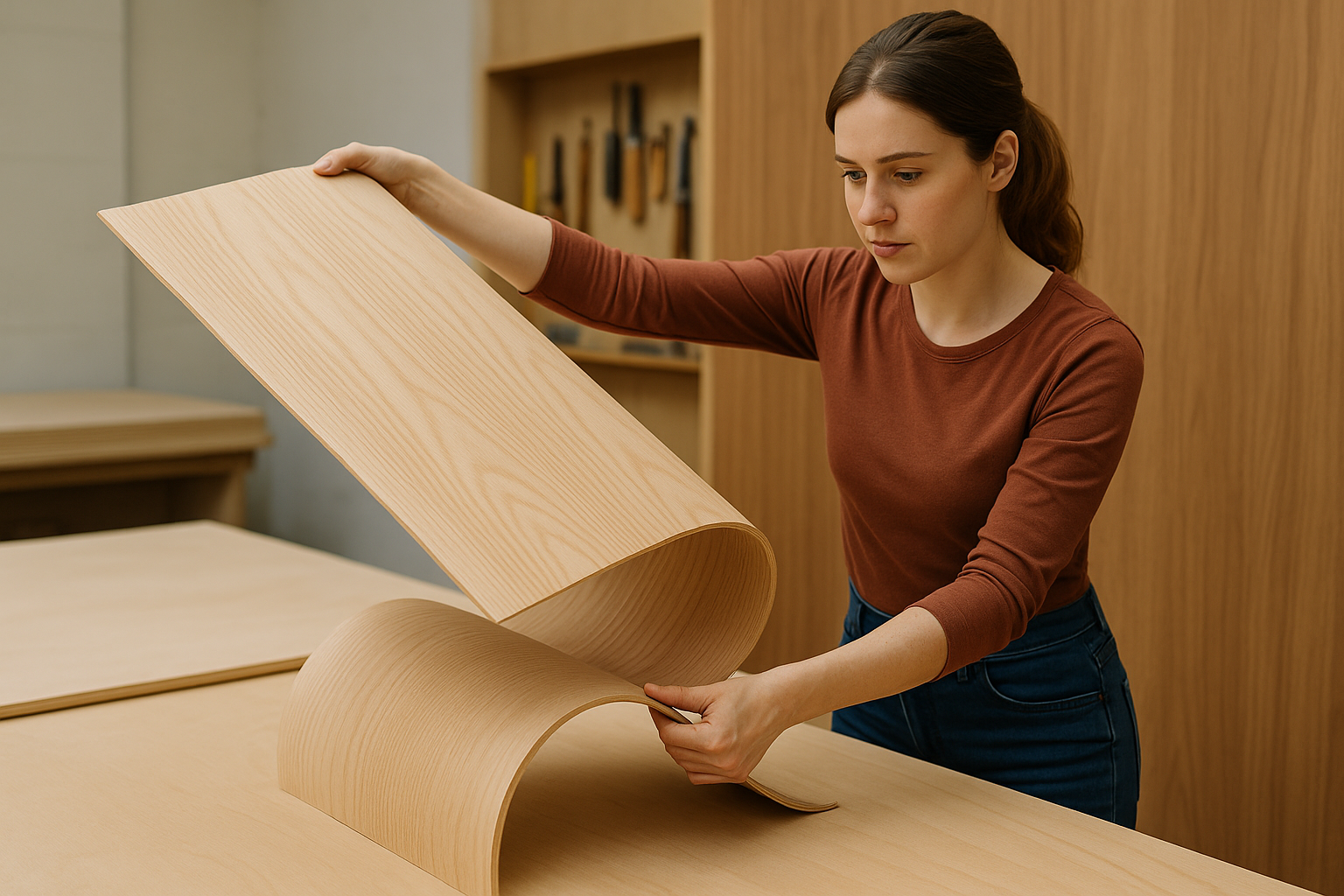What is Bendy Ply?
Bendy ply is a flexible plywood panel designed specifically for curved applications. It’s made by layering thin veneers with the grain of the core running perpendicular to the surface, allowing the sheet to bend easily in one direction without splitting or cracking.
There are two types:
- Long grain/Long band bend – Bends across the width of the sheet
- Cross grain/Short band bend – Bends across the length
Commonly available in 2440mm x 1220mm sheets, bendy ply comes in thicknesses ranging from 5mm to 8mm. The thinner the board, the tighter the curve it can achieve.
Why Builders and Designers Love Bendy Ply
The main appeal of bendy ply is its ability to deliver curved surfaces without the complexity. Unlike traditional timber, you don’t need to steam, laminate layers, or cut numerous segments to form a radius. It bends by hand, holds its shape well, and can be fixed using standard fasteners or adhesives.
In commercial settings, it's used for reception desks, display units, curved bulkheads, and feature walls. In residential builds, it’s perfect for archways, vanities, and sculptural joinery. It’s also ideal for creative applications like furniture design, stage sets, and event builds.
Lightweight, Flexible and Easy to Use
Despite its flexibility, bendy ply is surprisingly strong. Once curved and fixed into position, especially when laminated or framed, it becomes rigid and durable. That makes it ideal for use in high-traffic areas or anywhere you need both style and structure.
Because it’s so light, bendy ply is easier to transport, lift, and install. It can be shaped onsite with standard tools, saving time and labour. You don’t need specialist gear, making it ideal for smaller teams or custom projects with tight timelines.
Clean Finish, Custom Look
Most bendy ply sheets are faced with smooth tropical hardwood veneers like Lauan or Meranti, giving them a clean, even surface that’s ready to finish. Whether you’re painting, veneering, or applying laminate, bendy ply takes finishes well and delivers a premium look.
This makes it easy to integrate curved elements into your overall design palette, whether you're matching a natural timber look or opting for a bold laminate finish.
Smarter Use of Budget
Creating curves using solid timber or conventional ply is often labour-intensive and wasteful. Bendy ply simplifies fabrication, reduces the number of joins, and eliminates the need for expensive formwork or custom processes.
This efficiency makes it ideal for projects where budget matters, but visual impact still counts. For designers and contractors alike, it’s a cost-effective way to achieve high-end results.
Where Bendy Ply Works Best
From high-end retail to custom joinery, bendy ply is finding its place across all kinds of Australian projects:
- Residential interiors – Curved kitchen islands, bathroom vanities, stair features, or archway detailing
- Commercial fit-outs – Sculpted shopfronts, counter fronts, curved partitioning or signage
- Furniture design – Pod chairs, rounded desks, freeform shelving, or wavy benches
- Event and stage design – Lightweight backdrops and immersive builds that are fast to assemble and pack down
Whether you're building permanent features or temporary installations, bendy ply adds dimension and creativity with minimal fuss.
Tips for Working with Bendy Ply
To get the best results when using bendy ply, a few best practices go a long way:
- Choose the correct grain direction based on how your curve needs to bend
- Use a jig or frame to hold the shape during fixing or gluing
- Laminate multiple sheets together for added strength
- Apply clamps evenly during glue setting for a smooth, clean curve
- Sand and prep all surfaces before finishing to achieve a professional look
A More Sustainable Choice
Beyond its design advantages, bendy ply is also an environmentally responsible material. It’s typically made from fast-growing plantation timbers and uses less hardwood than solid timber, reducing resource waste. Its lightweight also reduces transport emissions, and when used with low-VOC finishes and adhesives, it fits right into green building practices.
Curves Without Compromise
Bendy ply has transformed the way we approach curved surfaces. It’s light, flexible, easy to work with, and strong enough for commercial-grade applications. For tradespeople and designers looking to bring softness, flow, and form into their builds, without the usual hurdles, it’s an essential addition to the materials list.
From boutique retail interiors to one-of-a-kind furniture pieces, bendy ply makes the impossible not only possible, but practical.
Discover the full range of bendy ply and flexible panel products at Bord Products, or get in touch with our team to talk through your project requirements. You can also visit our resources page for tips, guides, and industry insights.

Explore Bord Products
Our Melbourne facility produces hundreds of veneer and laminate panels daily, giving us total control over timeframes and quality.

Visit Our Showroom
Get expert advice on material selection for your project and see our entire range of veneers and laminates in person.

Specify Sustainable
We support sustainable forest management in Australia and across the globe. Look out for certified products on our website or speak to us.




